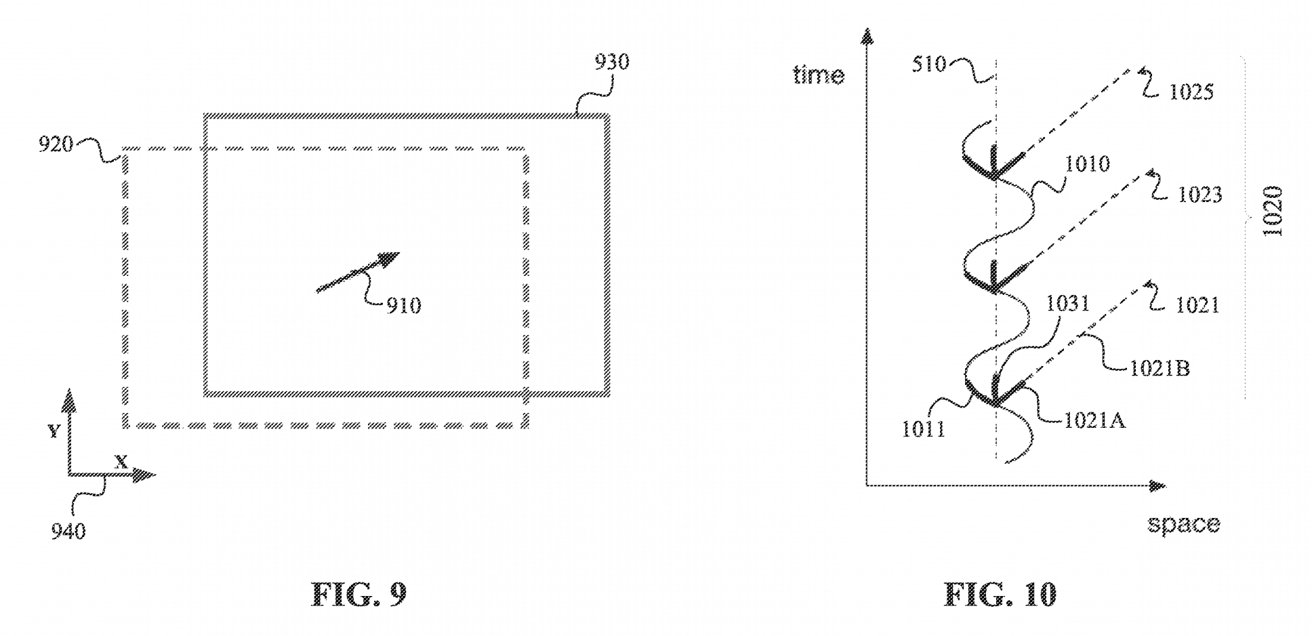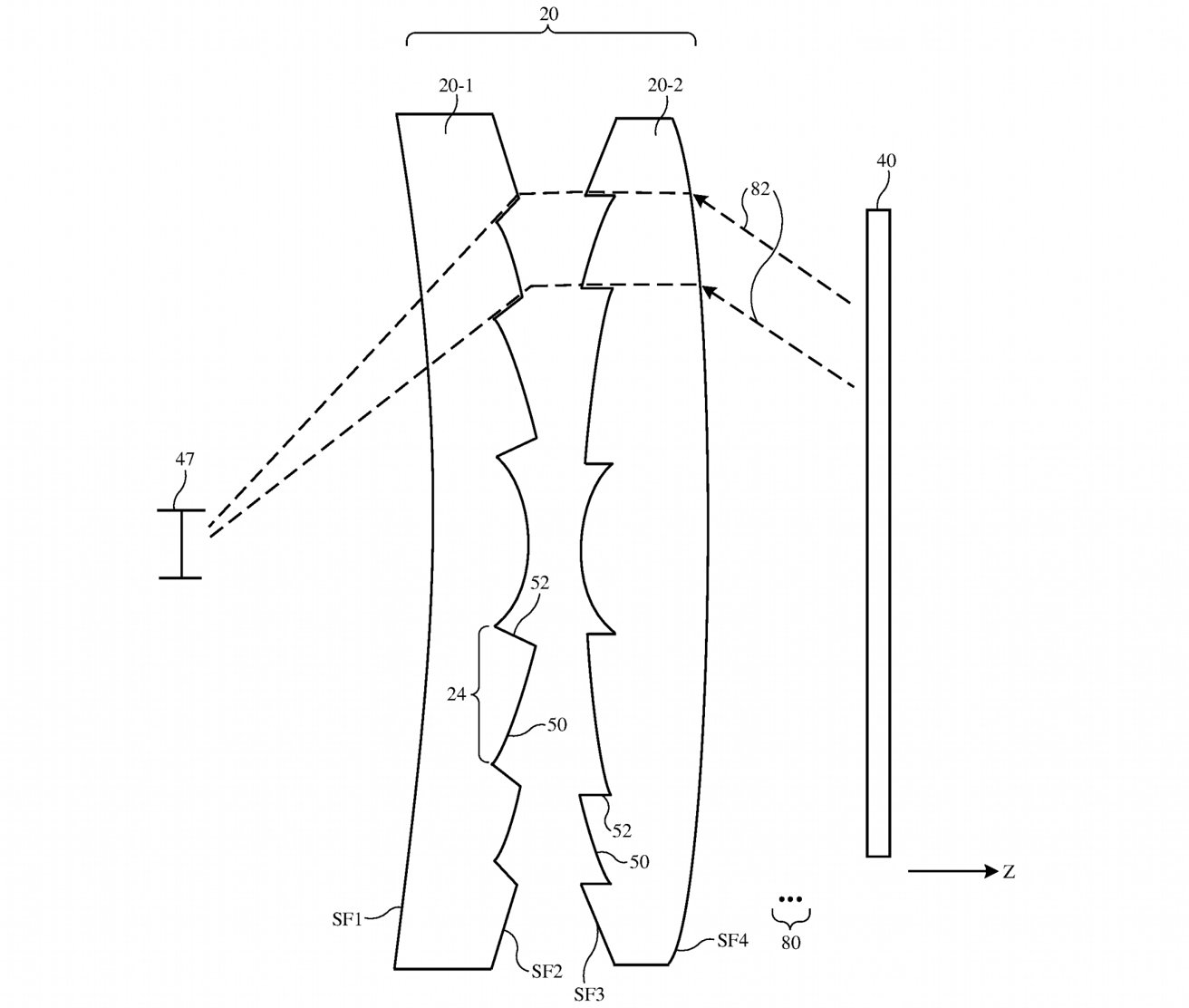Apple’s AR headset or “Apple Glass” device may use a movable display to compensate for motion blur, while fresnel lenses could help keep the weight of the headset down for users.
Apple is long-rumored to be working on some form of head-mounted display, possibly in the form of a VR or AR headset. There is also the product known as “Apple Glass,” believed to be smart glasses with AR capabilities.
In developing such hardware, Apple has tried to come up with potential solutions to design issues, which have regularly surfaced in patent filings.
In a pair granted by the U.S. Patent and Trademark Office on Tuesday, Apple is seen to be working on display elements, to make the rumored device the best it can be against its competitors.
Motion blur
The first patent, “Motion blur compensation through display actuation,” handles a problem of motion blur in an unusual way.
While motion blur usually can be mitigated by reducing the persistence of a pixel on a display, this may not be wanted due to it reducing the perceived brightness of the display itself. Ideally, the display needs to keep the pixel illuminated for long enough to be bright to the user, and reducing the time can dim the display.
In the patent, Apple suggests that the headset can include sensors to detect the movement of the device, such as a head shake. An inter-frame movement is determined, such as the direction and speed, which is used as a starting point to mitigate blur from the movement.

That movement data is used to adjust an actuator that is coupled to the display, moving it to oppose the inter-frame change in position. By shifting the screen, it counters the effects of the overall device movement, and can reduce motion blur.
It is also suggested the system could determine the inter-frame movement of a pixel on the display, which in turn is used to adjust the movement of the actuator that shifts the screen. Another implementation uses time as part of its calculation for where the actuator should apply a “motive force” to the display.
The patent was originally filed on August 29, 2019, with its inventor as Tobias Eble.
Fresnel lenses
The second patent, a “Head-mounted display device with Fresnel lenses,” Apple offers a display system that could potentially create a lightweight headset for its users.
Typically, VR headsets rely on a series of lenses to allow a user to clearly see a screen that has been placed very close to their eyes. Using the lenses, the screen appears to be in focus and as if it’s far away, but this can add weight to the design of the headset.
Fresnel lenses are a type of lens that employ wedge shapes, grooves, and rings to adjust the passage of light in distinct areas. This is a similar concept to how a lighthouse uses Fresnel lenses to focus light out to sea, instead of illuminating an entire area.
For Apple’s patent, the lenses consist of curved convex surfaces pointing toward the display, complete with slope facets and draft facets, to allow the user to see the screen. The screen itself could be planar or curved, with the lenses constructed to take advantage of the screen’s curvature if required.

Sets of Fresnel lenses could be used to help users focus on a VR headset’s display.
To reduce light scattering, the draft facets could be coated with an opaque masking material, or by aligning concentric rings of a similar material on a transparent substrate near to the facets.
It’s plausible that pairs of Fresnel lenses could be used for such a system, with one adjusting light from the display to a specific distribution pattern. The second could collect light shone at it in this pattern and aim it towards the user’s vision.
By using Fresnel lenses, Apple could feasibly build a system using a small number of lenses working together, cutting down the amount of glass used, and in turn the weight of the headset itself.
Filed on February 1, 2018, its inventors are listed as Victoria C. Chan, John N. Border, Jeffrey C. Olson, Yury A. Petrov, Edward S. Huo, and Brandon Clarke.
Apple files numerous patent applications on a weekly basis, but while the existence of a patent indicates areas of interest for the company, it doesn’t guarantee the ideas will appear in a future product or service.
The idea of using Fresnel lenses was raised by analyst Ming-Chi Kuo in March, claiming the headset would use a “hybrid Fresnel lens” to improve vignetting and optical artifacts, with each hybrid said to be made up of three stacked Fresnel lenses. This could result in a headset weighing as little as 150 grams, less than half the weight of existing VR headsets.
Other patents that have surfaced about the device include a True Tone-style ambient light-matching feature, and for areas of an AR screen to turn opaque to make AR images look better.
Keep up with everything Apple in the weekly AppleInsider Podcast — and get a fast news update from AppleInsider Daily. Just say, “Hey, Siri,” to your HomePod mini and ask for these podcasts, and our latest HomeKit Insider episode too.
If you want an ad-free main AppleInsider Podcast experience, you can support the AppleInsider podcast by subscribing for $5 per month through Apple’s Podcasts app, or via Patreon if you prefer any other podcast player.




